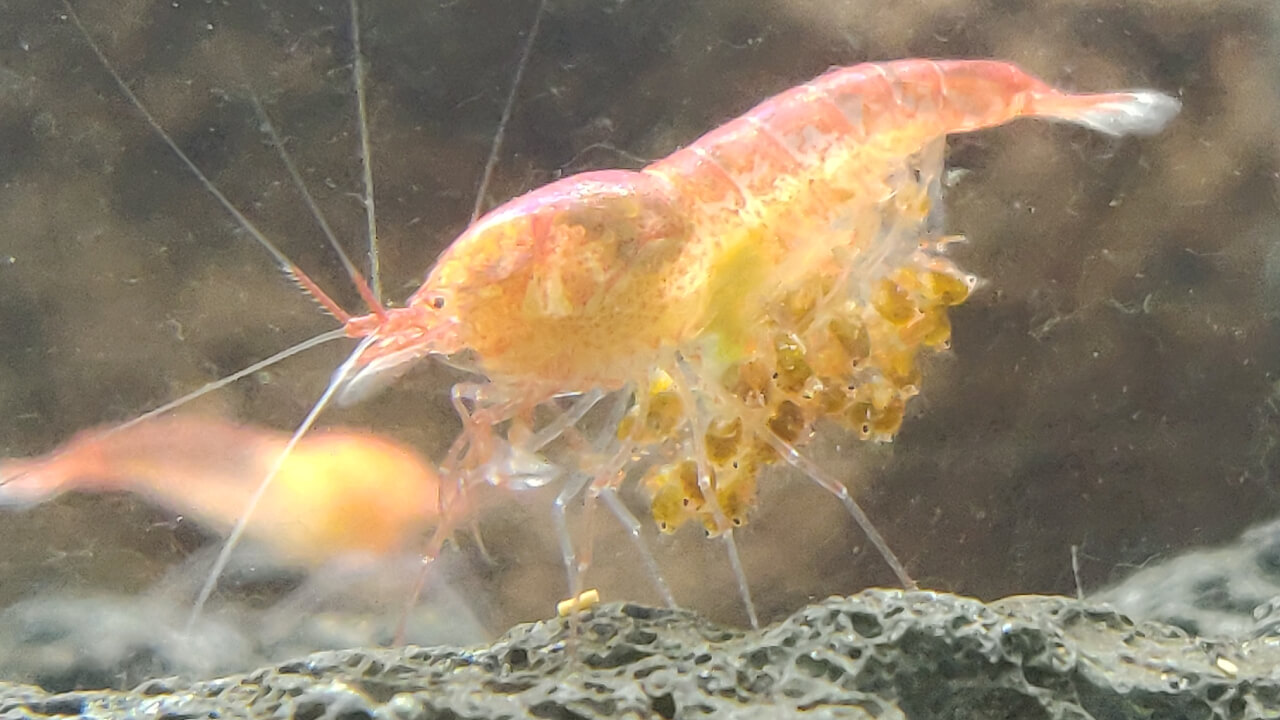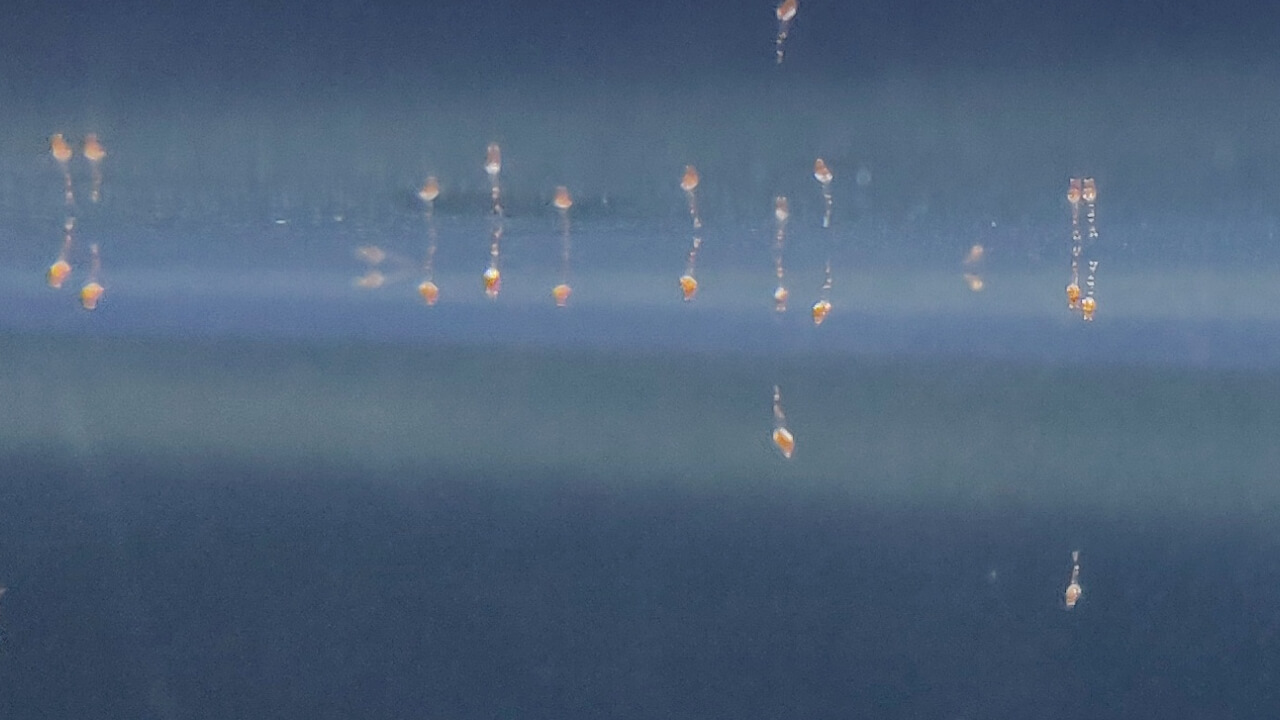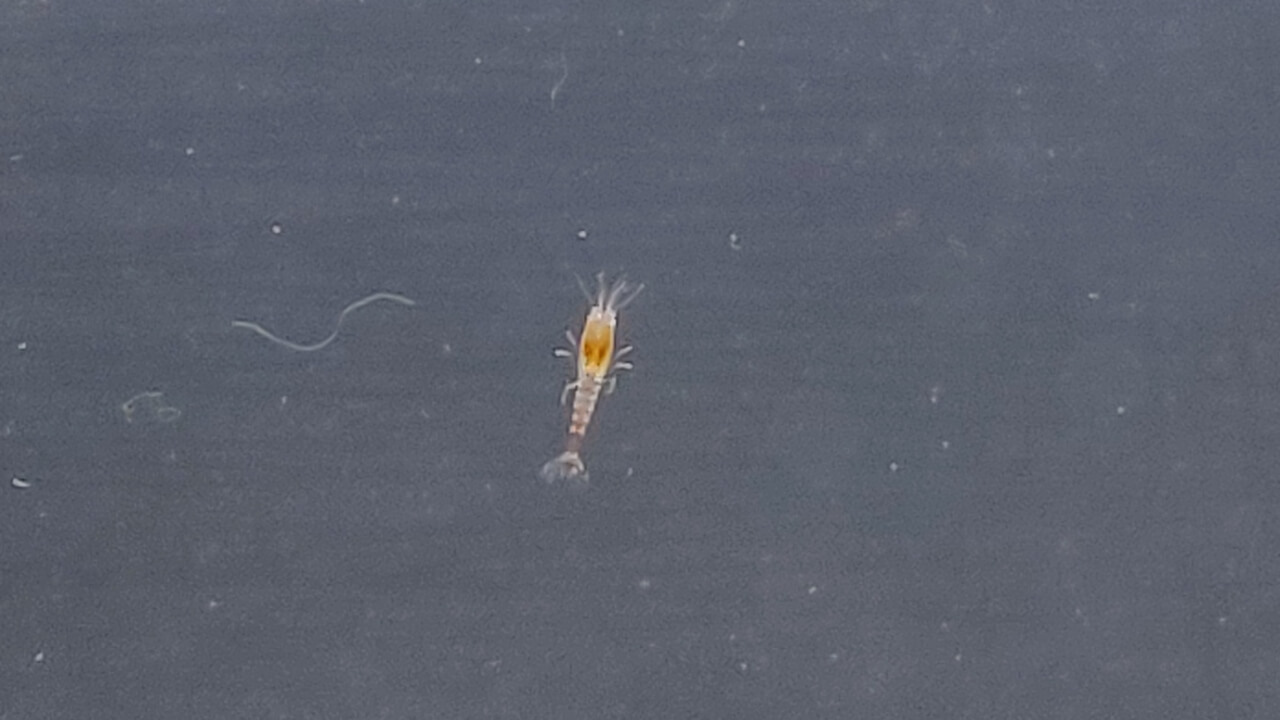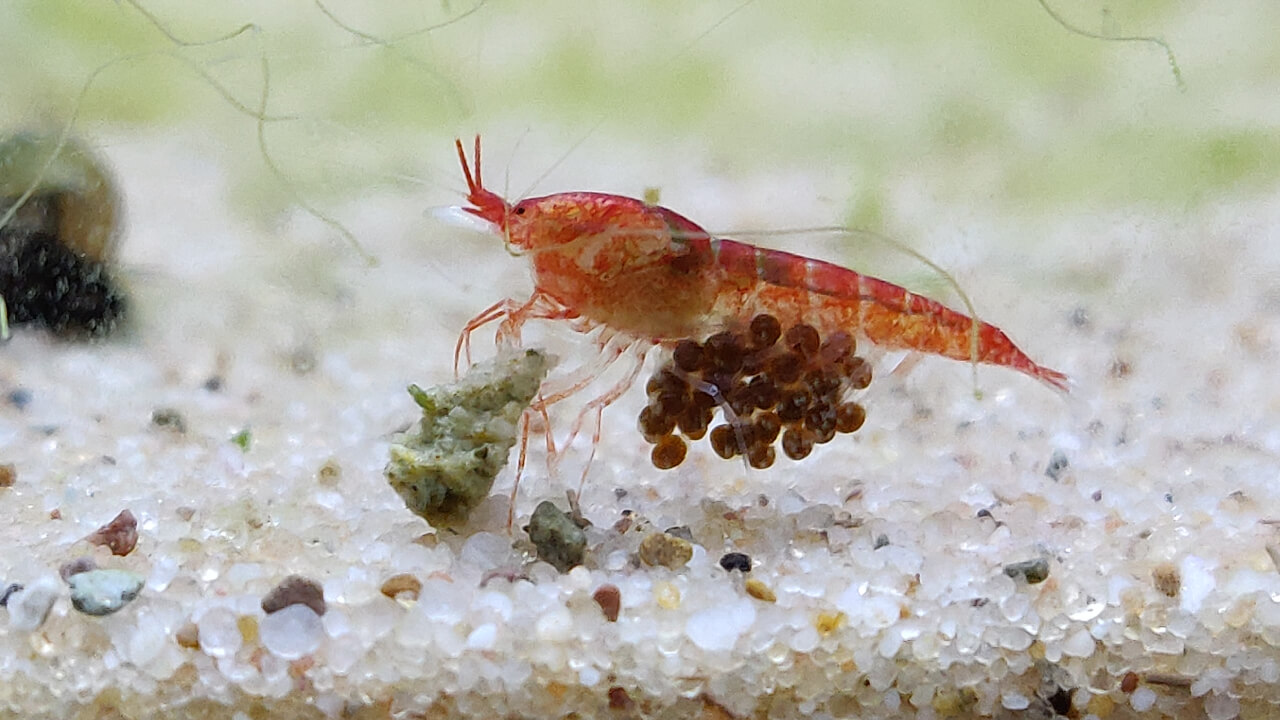One of the most important steps for breeding Opae Ula is to be patient.
In a new tank, they can take a few months to settle in before they’re comfortable enough to breed.
I set up my Opae Ula tank in September 2019, but had to wait 4 months, until January 2020, before I had any berried shrimp.
This was in a 12 litre tank with no filter or heater, and a salinity around 0.012 sg.
How Opae Ula breed
The mating process is very similar to how Neocaridina shrimp do it.
Roughly every four weeks, a female shrimp will molt from her exoskeleton in order to grow a newer, slightly larger one.
As she escapes, she releases a pheromone into the water that attracts all the sexually active males.
This puts the males into “chase mode”, swimming hastily around the tank to find the freshly molted female.
The female will usually try to hide and get away from all the attention, until she’s ready to mate.
Shortly after, if the mating was successful, the female will begin carrying eggs under her body. This is known as being berried, as the eggs look like small berries.

How many eggs do they carry?
Typically, they’ll carry between 10 and 20 eggs.
It takes about 4 weeks before the eggs hatch, and they leave their mother. They won’t all leave at once, and it can take two or three days before all of the eggs hatch.
Growth stages
There are four key life stages for an Opae Ula shrimp:
- Egg for 4 weeks
- Larvae for 3 more weeks
- Juvenile for 2 more weeks
- Adult for up to 20 years
Growing from an egg, into a small adult Opae Ula, takes roughly two months in total.
Stage 1: Egg
The egg stage lasts for roughly 3 or 4 weeks. They’re carried under their mother’s body, with 20 or so siblings.
When they’re ready to hatch, they escape from their egg shell and begin their larvae stage.
Stage 2: Larvae
At this point, the larvae are basically just eyes on a head, floating vertically.
They don’t have any legs or swimmerets to move around with. They bob up and down near the water surface until they’ve developed a bit more.

They’re attracted to light, so if you have a light on one side of your tank, you’ll notice they gather under it more than on the dark side.
To feed themselves, they eat their yolk sac from their egg phase. They don’t have the ability to forage around for food and eat much else at this stage.
So, don’t worry about feeding extra for the babies, they’ll eat the same as the adults when they’re ready.
Three weeks after hatching, they should have grown tiny legs and enter into the juvenile stage.
Stage 3: Juvenile
As a juvenile, they’re now able to swim and move around with their little legs and swimmerets.
They can forage for biofilm and algae just like an adult. If you supplement your tank with any food, you might need to increase the dosage a tiny bit at this time.
After another two or three weeks, they’ll be closer to adult size, and enter the final stage.

Stage 4: Adult
The shrimp is almost fully grown, and spends up to the next 20 years living a happy life.
They may continue to grow for another few weeks, getting larger and sometimes getting a deeper red colour too.
Tips to encourage breeding
Setting up your Opae Ula tank right from the beginning will make it much easier to build up a large colony.
- Prevent biofilm and algae covering the surface
- Avoid disturbing the water
- Keep stable water parameters
- Check they’ve got enough food
- Give the shrimp hiding places
- Check the light level
- Let the tank mature
Keep the surface breathable
Biofilm or a layer of algae covering the water surface can prevent oxygen getting into the water, and cause stress on your shrimp.
Try to keep the surface open for gas exchange.
Another benefit of an open surface is that babies in the larvae stage won’t get caught up in it either.
Don’t disturb the water
Moving the water around, either with a filter or your hands, can cause stress for your shrimp.
Especially if they don’t have many hiding places to run away to.
Larvae stage babies have very little ability to move around too, so you risk pushing them somewhere they can get stuck.
Stable parameters
If you’ve had your shrimp for a few months, but they’re still not wanting to breed, check your core water parameters.
- Salinity: 1.008 sg - 1.018 sg
- Temperature: 20 - 30 °C (68 - 86 °F)
- Ammonia / nitrates: 0
- pH: 7.5 - 8.5
If you’re between these ranges, also check that they’re not swinging throughout the day.
For example, the pH level might start at 7.5 in the morning, but climb to 8.0 by the evening.
Swinging parameters stress your shrimp, and prevent them from wanting to mate.
Feed enough
You shouldn’t really need to feed your tank once it’s mature, maybe just a small punt of spirulina powder every so often.
If you’re not feeding at all, or only every few weeks, and they go crazy for it, you might need to increase the frequency a bit.
Offer hiding spots
When stressed, the shrimp will try to hide behind plants or rocks.
This is especially helpful for females after molting, as they can get a bit of a break from the males trying to find her.
Check the brightness
If your light is too bright, the shrimp might not like to venture out of shelter as they feel unsafe.
Try to reduce the brightness, or the amount of time the light’s on throughout the day.
Likewise, if it’s too dark, you won’t be growing much biofilm and algae for them to eat.
Mature the tank
Give a fresh tank time to mature before you add your shrimp, if possible.
This means giving biofilm and algae time to grow and cover your hardscape. This offers your shrimp a huge amount of tasty food that they can find all over the tank.
Maturing the tank also ensures you’ve given beneficial bacteria time to grow, to keep ammonia and nitrates under control.
This is especially helpful in tanks without a filter, as you still need to cycle the tank, it just takes longer.

